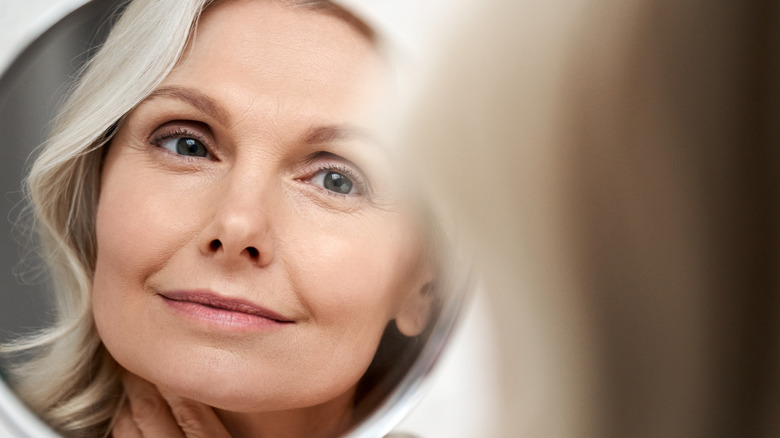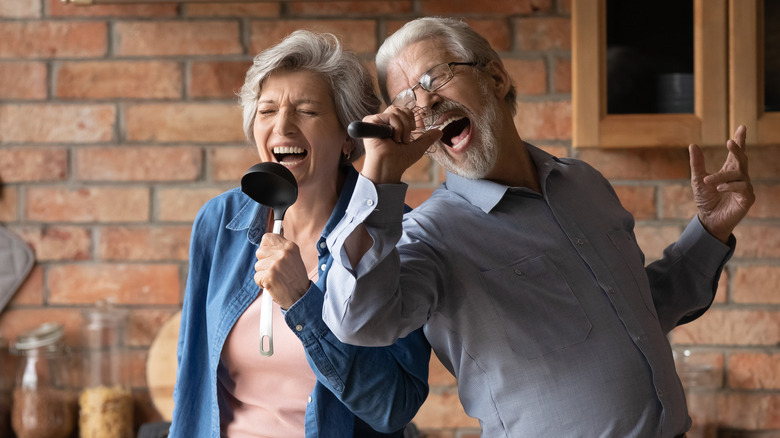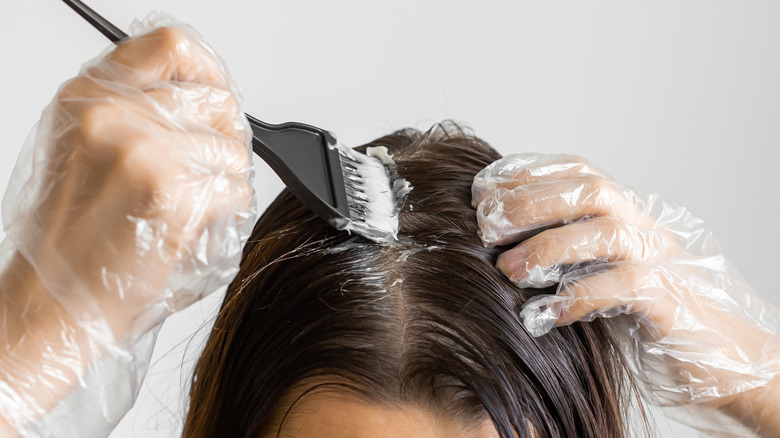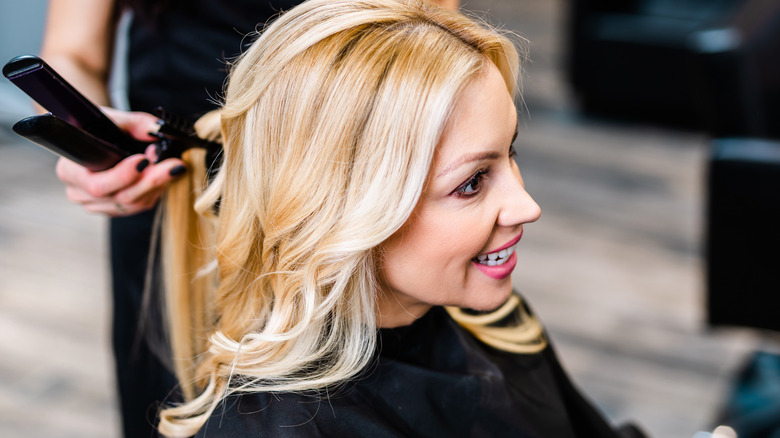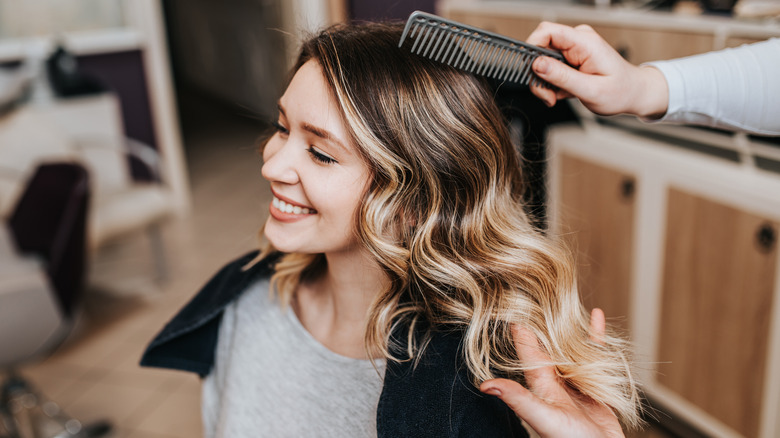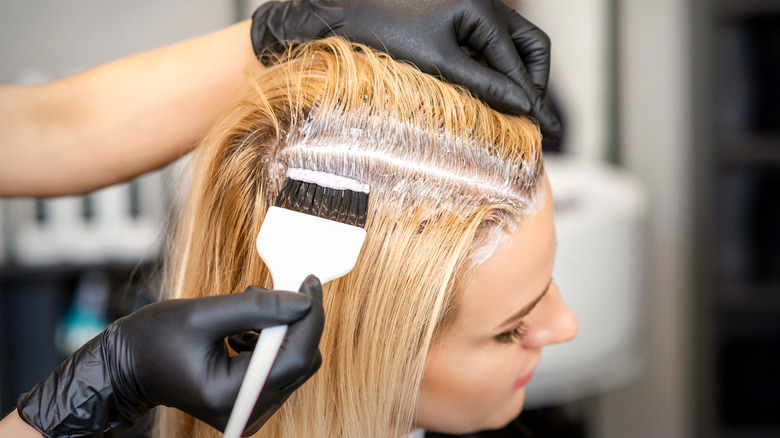Your Guide To Coloring Your Gray Hair Blonde
There are a number of reasons why you would want to switch up your gray hair for a blonder color. Some people want to delay the signs of aging just a little bit longer while others simply think gray just isn't a flattering color for them. Whatever the reason, you can go from gray to blonde pretty easily. However, you can also just as easily screw the whole thing up. Dyeing your hair is always a delicate process and should be handled by expert hands. While you can still color your hair well by yourself as long as you know what you're doing, it's best left to a professional.
Blonde is such a popular hair color, especially for people with graying hair. This is because blonde and gray hair are very similar when it comes to being of a lighter hue. There are things you need to know before undertaking a dye job like this. However, if done properly, your hair can come out healthy and vibrant. The first thing to know is what's happening when your hair goes gray and then you can understand the best way to cover it with blonde dye.
What causes gray hair?
Gray hair is something most of us will experience as we grow older. Although it is often depicted in the media as the harbinger of age and doom, finding a silvery strand on your head isn't a reason to frantically sift through your baby pictures, crying about how young you used to be. In fact, a full head of gray hair is considered glorious and a sign of wisdom in some cultures.
According to Healthline, gray hair is hair that is devoid of melanin. Melanin is the pigment responsible for your hair, eye, and skin color. There are loads of factors that can determine when and how your gray hair will come out. Naturally, age should take care of that for you, but some people get gray hair even as teenagers. This is usually due to genetics.
Other factors that contribute to graying hair are stress and health disorders such as autoimmune diseases, thyroid problems, and vitamin B-12 deficiency. In some cases, you wouldn't even need to color your gray hair because not all graying conditions are permanent, such as thyroid problems. However, regardless of the cause of your gray hair, you can cover it with dye.
Take the easy route with semi-permanent dye
Dyeing your hair is a thrill all on its own, particularly when you get to see the gorgeous results manifest. If you don't want to use permanent dye on your hair, you can opt for a semi-permanent dye job instead. According to professional hair colorist Jennifer Sarchet via Byrdie, the good thing about a semi-permanent dye is that it's temporary and you can change your mind about it later. "It has no ammonia in it so it doesn't cover grey, but rather blends grey so it will almost stain the color," she explains. "This is great because there's no commitment and it fades off."
The downside to this is that it isn't permanent which means the color will eventually wash out and you'll be left with gray hair again. If this isn't a problem for you, then by all means, dye away. However, if you're in the market for something more permanent, then you'll have to try another method.
Highlights can mask the gray while looking chic and trendy
When it comes to coloring gray hair blonde, the idea is to create as natural a look as possible so that when you have new growth, it can fit in with the blonde strands without standing out too much. There are a couple of ways you can do this. You can create this natural gleam by going for highlights. Highlighting your hair will draw attention away from the grayness and give the blonde an extra perk. This is for people who don't want the full-on blonde dye but would like to make their gray hairs inconspicuous enough to pass for highlights.
Per Wella Professionals, you can achieve this by getting the highlights out of the way first before applying the main blonde color to the rest of the head. Then, go into your roots with your chosen blonde color. Let the color process fully and shampoo it out and condition.
The pros to getting highlights? You'd be masking your gray hair and your new growth can homogenize into the highlights without much challenge. The cons? Highlights don't offer full coverage. For fuller coverage of gray hair, you will have to decide on another method.
Knock the gray right off with a balayage style
If you have new gray roots and don't want to just go with the highlighter route, you can decide to shadow them and get a balayage instead. According to Wella Professionals, a root shadow involves dyeing your roots a darker color in order to provide contrast between them and the rest of your hair while a balayage refers to the natural-esque highlights you get towards the middle and ends of your hair. Shadowing your roots gives your color a transitional element that you wouldn't have gotten otherwise because the color isn't blunt across the hair.
If you are eyeing a root shadow treatment, then start off with darkening your roots to give them a good foundation color. The color you choose has to be seamless enough to blend in with the rest of your hair without overpowering it. Then, the balayage is created by applying the lighter color onto the hair in an artistic way that doesn't involve foil. This makes the highlights look like it grew out of your own head which, as far as we're concerned, it did. Wink, wink. The great thing about this root shadow-balayage combo is that it'll give your hair the illusion of body and volume.
DIY tips for covering the gray
Unless you hold a cosmetology certificate, you know that coloring hair gets better and easier with practice. However, since you only have one head of hair, jotting down a set of tips might be a more welcome option. When coloring your gray hair blonde, there are some things you need to know to make the process less harrowing. First, go with a suitable blonde for your hair and skin tone. The blonde color is very versatile and you can choose from a wide range of shades. Pick the right shade of blonde that your gray hair would mesh well with once it starts growing back. Another tip is to make sure you start coloring your hair from the area with the most gray. This is because the processing time for hair can last well over 30 minutes. If you start dyeing with a scanty cluster of gray hairs, they would end up over-processing by the time you're done with your whole head.
Finally, heat is your best friend when you're dyeing your hair because it can cut the processing time down. You can accomplish this by wrapping the processing hair in tinfoil and folding it close to the head, or using a shower cap. Whichever way works for you is fine as long as you carefully monitor the hair to prevent damage. Once you have successfully transformed your dingy gray into a bouncing blonde, the agonizing process will all be worth it.
